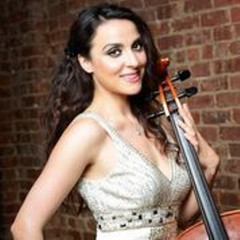|
Back
Beyond the Ottoman Empire New York
Peter Norton Symphony Space
09/10/2015 -
“Play For Peace Concert”
Faruk Kanca: Ornament Overture; (World premiere)
Peter Ilych Tchaikovsky: Queen of Spades Suite, Opus 68 (Arranged by Peter Breiner)
Nimrod Borenstein: Concerto for Cello and String Orchestra, Opus 56b (American premiere)
Edouard Lalo: Symphonie Espagnole, Opus 21
Gjilberta Lucaj (Cello), Yigit Karatas (Violin)
YPHIL International Philharmonic Orchestra, Peter Breiner (Conductor)

P. Breiner (© Gulnara Studio)
Any concert titled “Play For Peace Concert” must be viewed (or heard) with no small degree of skepticism. Music has traditionally encouraged the warriors, not the peacemakers. And even these talented young players could hardly compete with the blazoning sounds of the real war-makers. Those are the purveyors not of musical instruments but instruments of bombs, guns, warplanes etc. Sweet violins and cellos are no rivals.
Still, a Turkish-American group called “The Turken Foundation”, which apparently exists to help Turkish students in America, has sponsored young musicians from 70 different countries to play seven different concerts in New York this week. (See Coda.) And if their sounds hardly compete with our more established orchestras, their first concert was certainly unique.
The selections didn’t have much unity, but two composers–Faruk Kanca and Nimrod Borenstein–were new to me. The name of the conductor, Peter Breiner, was also new, but his recordings of Presley and the Beatles (both in his “Baroque” arrangements) are best-sellers, and he contributed another arrangement here.
While the logo of “YP” shamelessly showed the Star and Crescent of the Turkish flag, the internationalism was apparent in all the artists. An Albanian cellist, a Turkish violinist, music from Israel, Turkey, France and Russia, were all fascinating in different ways.
Though the most fascinating were Faruk Kanca’s opening Ornaments Overture. Mr. Kanca is a musicologist of note, and he obviously knows his world-wide music. Thus in this short piece, which was oh so Turkish in its outlines and scales, he added a dozen instruments from around the world. Some of the names were unfamiliar An umrubhe?? A haegeum?? A suling?? But they played alongside a more familiar pan flute, mandolin, guitar, Vietnamese pipa and (since I returned from Turkey last week) the familiar kemence and oud (both of them lute-like instruments).
Mr. Kanca is no Tan Dun. His instruments worked themselves into the texture of simple musical variations but gave no particular color. Yet as pure music, the modal work had that rhythmic impetus and joy one feels in all Turkish music.
Conductor Breiner had arranged three pieces from Tchaikovsky’s The Queen of Spades, and while the slower arias sounded a bit turgid from the orchestra, the Russian galop was given a nice Slavic tone.
For two reasons, the following Concerto For Cello and String Orchestra was intriguing. First, I had never (or heard of) Nimrod Borenstein (though it’s difficult to forget his first name, both for Elgar’s Variations and Biblical significance.) He is a most proficient composer, writing much for cello and strings, and obviously has a technical facility. The first few measures echoed the best of Philip Glass, but after that, the work became sheerly neo-Romantic. Pretty themes in all three movements, pleasant develop.m.ent, nothing challenging or memorable.

G. Lucaj (© International Philharmonic Orchestra)
Far more memorable was the performance of the Albanian soloist, Gjilberta Lucaj. The last time I heard music in Tirana, the orchestra was larger than the audience in the explosion-shattered concert hall. But Ms. Lucaj, an irrepressible charmer of a personality with a gorgeous instrument, swung though this work with easy facility and evident enjoyment. No cadenzas, no Ligeti-style cello tricks, yet with a fetching mellow tone, an unforced technique, and dominance over the colorless strings of the ensemble.
The only familiar work was after the intermission. Lalo’s Symphonie Espagnol, part of the enduring French love affair with Spain, five movements that could be piquant, vivacious, languorous and as Iberian as anything later composed by Debussy and Ravel.
Yigit Karatas, the young violin soloist, was born in Mersin, Turkey, itself on the Mediterranean, and he displayed obvious talent, discernable good training, beginning in Turkey, then in Israel and presently at the Manhattan School of Music. Yet for all his innate talent, this was a joyless performance. Next to Ms. Lucaj’s quiet ebullience, Mr. Karatas was stolid, unsmiling, disciplined, his emotional relationship confined to his fingers.
One had the feeling that he didn’t really revel in the music, but played it as an exercise. Or perhaps he was simply uninspired by the orchestra behind him. Lalo’s five-movement suite can sing for itself, yet, as Mr. Karatas will discover during his career, those songs need a singer with as much spirit as technique.
*********************************************
Coda: Whatever else one may say, this is certainly the most ambitious ensemble to appear in New York. For that alone, a listing of their six other New York concerts are offered here.
September 14, 3 p.m.; Herald Square, dedicated to victims of 9/11; September 16, 3 p.m.: Times Square Hear My Nations’ Voice Concert; September 17, 7.30 p.m.: New York University Skirball Hall, Gathering for Youth Empowerment; September 20, 3 p.m., Bowling Green Park, Wall Street. Concert for Nations’ Friendship; September 25, 7 p.m.: Community Fellowship Program at the New York Public Library, Fifth Avenue;
And the big one at Carnegie Hall, September 27, Isaac Stern Auditorium. A Concert for Global Peace
Harry Rolnick
|